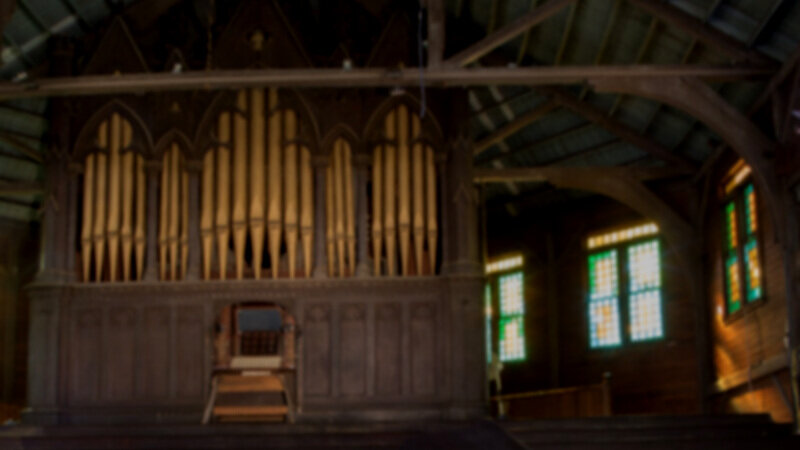
Organ
Davis Ferris Tracker Organ
Front and center at the Round Lake Auditorium is the visually and audibly impressive Davis Ferris Tracker pipe organ. This organ was designated a National Historic Landmark by the Department of the Interior in 2016 and is one of a very few objects that have received this designation. Built in 1847 for a church in New York City, it was a remarkable instrument at the time it was built nearly 200 years ago. Today is noteworthy as an example of early American manufacturing and innovation and it is the oldest, largely unaltered instrument of this kind in the United States.
“Tracker” refers to a mechanism consisting of thin, almost ribbon-like wooden trackers that connect the keyboard to the pipes to control when air flows through to produce sound. The largest “pipes” resemble immense wooden boxes, and the smallest are the size of a child’s finger. One of the innovative technologies that were employed in the construction of the pipes in this organ is the use of zinc in the non-wooden pipes. Zinc added strength to pipes which had previously been entirely made of lead which, over time, tended to fold in on themselves and collapse. If you have the opportunity to see the inner workings of this organ, you will marvel at the craftsmanship – using no modern power tools – that resulted in this instrument that mimics the sounds of an orchestra and the human voice using almost two thousand individual pipes sounding together in harmony by touching a keyboard.
Playing this organ is a physical endeavor and requires a special knowledge of how to manage the tracker mechanism. One organist compared playing this organ to typing on a manual typewriter versus the light responsiveness of a computer keyboard. Organists have traveled to Round Lake from far and wide to play this instrument because the tracker mechanism provides a unique and unusual opportunity for the organist to shape the sounds produced. From the audience, the organists appear to dance on the pedal and throw themselves into pressing the keys. Several organ concerts are scheduled every summer, and typically we permit anyone who wishes to, the opportunity to step inside the organ after the performance. Keep your eye out for one of these events and a chance to hear and see this amazing instrument.
FOR ORGAN AFICIONADOS
Excerpt from from the Organ Historical Society's 50th Anniversary Convention booklet
The oldest large, nearly intact three-manual organ in the United States, this instrument was built in 1847 by a New York organ-building partnership known as Davis & Ferris (William H. Davis, 1816–88, and Richard M. Ferris, 1818–58). Ordered by the music committee of Calvary Episcopal Church in New York City, it was relocated in 1888 to the Round Lake Auditorium by Giles Beach (1826–1906), an organbuilder from Gloversville, New York. While the instrument has had mechanical changes, virtually all of the sounding portions of the instrument (i.e., the wind system, chests, and pipework) are intact, providing us a “living” record of what a large urban organ of the time sounded like to its original listeners.
The Davis & Ferris organ has many firsts in American organ history: the liberal use of zinc in its pipework; two enormous triple-rise reservoirs with inverted ribs; a Great chorus of doubled diapasons with two opens, two principals, and two mixtures; and a Swell box (with a hitch-down pedal!) with double-thick walls and four sets of shades. The firm was so proud of their use of zinc, that one stopknob is actually engraved “2nd Op. Diapason Zinc.”
News
Organ Recitals
Read more on the Village of Round Lake Website





